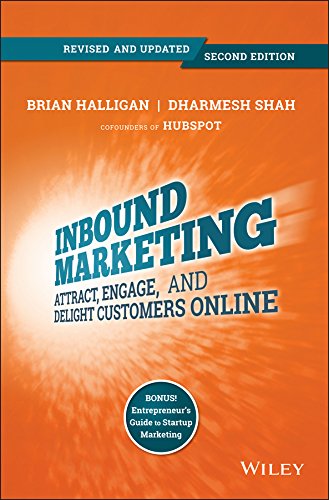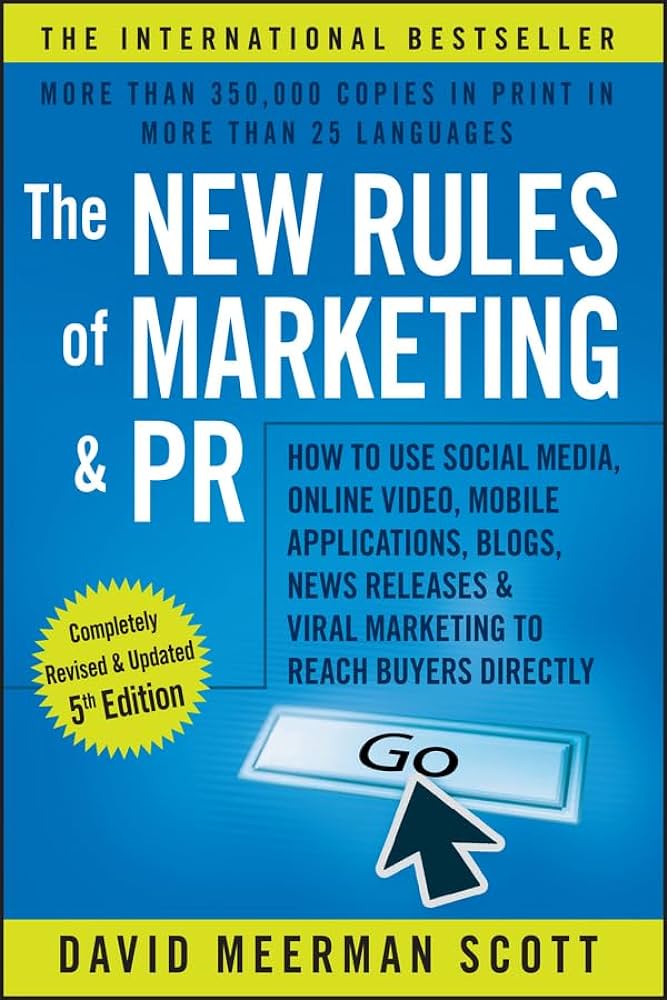

Inbound Marketing, Revised and Updated: Attract, Engage, and Delight Customers Online" by Brian Halligan and Dharmesh Shah vs The New Rules of Marketing and PR: How to Use Social Media, Online Video, Mobile Applications, Blogs, News Releases, and Viral Marketing to Reach Buyers Directly" by David Meerman Scott
Inbound Marketing, Revised and Updated by Brian Halligan and Dharmesh Shah
- Overview: This book focuses on the inbound marketing methodology, which includes attracting customers through relevant content, engaging them through personalized communication, and delighting them to build long-term relationships. It covers strategies for leveraging content, social media, and SEO to attract and retain customers.
- Learning: Provides a detailed guide on creating inbound marketing strategies, including practical tips for implementing these techniques effectively.
The New Rules of Marketing and PR by David Meerman Scott
- Overview: This book explores modern marketing and PR strategies in the digital age. It emphasizes the importance of using social media, blogs, online video, and other digital tools to connect directly with buyers and build a brand. The book includes practical advice on how to leverage these tools for effective marketing.
- Learning: Offers a broad view of how to utilize various digital platforms for marketing and PR, including case studies and real-world examples to illustrate successful strategies.
The Lean Startup by Eric Ries
- Overview: This book presents a methodology for developing businesses and products quickly and efficiently. It introduces concepts like validated learning, build-measure-learn feedback loops, and minimal viable products (MVPs). It is aimed at startups looking to innovate and scale effectively.
- Learning: Focuses on how to build and manage startups by testing hypotheses and using feedback to improve products and business strategies.
Comparison Table:
| Aspect | Inbound Marketing | The New Rules of Marketing and PR | The Lean Startup |
|---|---|---|---|
| Author(s) | Brian Halligan & Dharmesh Shah | David Meerman Scott | Eric Ries |
| Focus | Inbound marketing strategies | Digital marketing and PR strategies | Startup methodologies and product development |
| Primary Audience | Marketers, business owners | Marketers, PR professionals, business owners | Entrepreneurs, startups, product managers |
| Key Concepts | Attracting, engaging, and delighting customers | Using social media, blogs, and online tools for marketing | Validated learning, MVPs, and iterative development |
| Approach | Practical guide with a focus on inbound techniques | Broad overview of digital marketing tools and tactics | Methodology for rapid development and feedback |
| Content Structure | Step-by-step implementation of inbound strategies | Comprehensive guide with various digital tools | Methodology with principles and real-life examples |
| Real-World Examples | Yes, with practical tips for implementation | Yes, with case studies and success stories | Yes, with examples from startups and innovation |
Summary:
- Inbound Marketing is ideal for those looking to dive deep into inbound marketing strategies and how to attract and retain customers through content and engagement.
- The New Rules of Marketing and PR provides a broad perspective on leveraging digital tools for marketing and PR, offering practical advice and examples.
- The Lean Startup focuses on a methodology for startups, emphasizing rapid iteration and validated learning to improve products and business strategies.
Each book offers unique insights tailored to different aspects of marketing and business development.
| Aspect | Brian Halligan & Dharmesh Shah | David Meerman Scott | Eric Ries |
|---|---|---|---|
| Primary Focus | Inbound marketing methodology | Digital marketing and PR strategies | Lean startup methodology and innovation |
| Approach to Marketing | Focuses on creating value through relevant content and engagement | Emphasizes direct engagement using digital tools and media | Advocates iterative development and validated learning |
| View on Digital Tools | Uses digital tools as part of a broader inbound strategy | Sees digital tools as primary means for marketing and PR | Views digital tools as part of a feedback loop in product development |
| Customer Engagement | Engagement is through personalized content and interaction | Direct engagement via social media and online channels | Engagement is through iterative feedback and continuous improvement |
| Content Creation | Content should be relevant and valuable to attract customers | Content should be shareable and create buzz to attract attention | Content should be minimal and tested to validate ideas quickly |
| Innovation Perspective | Incremental improvements through inbound strategies | Innovates through creative use of digital platforms | Emphasizes rapid experimentation and pivots based on feedback |
| Measurement of Success | Metrics related to customer acquisition and retention through inbound methods | Metrics related to reach, engagement, and conversion through digital channels | Metrics related to growth, product-market fit, and feedback effectiveness |
| Strategic Goals | Building long-term relationships and customer loyalty | Building brand awareness and direct connections with buyers | Validating business ideas and scaling efficiently based on feedback |
| Influence on Business | Strategic framework for attracting and retaining customers | Practical guide for using digital tools for immediate marketing impact | Methodological approach to startup success and product development |
Summary of Author Perspectives:
- Brian Halligan & Dharmesh Shah focus on the strategic use of inbound marketing to build long-term customer relationships through content and engagement.
- David Meerman Scott emphasizes the immediate impact of digital tools for marketing and PR, advocating for creative use to directly reach and engage with buyers.
- Eric Ries offers a methodology for startups to innovate and develop products through rapid experimentation and feedback, focusing on lean principles and efficiency.
Each author brings a unique perspective: Halligan and Shah on comprehensive inbound strategies, Scott on digital tools for direct engagement, and Ries on startup innovation and efficiency.
Here’s a table summarizing unique conclusions for each of the three books:
| Book Title | Unique Conclusion |
|---|---|
| Inbound Marketing, Revised and Updated | Inbound marketing is a comprehensive strategy for building long-term customer relationships. Effective inbound marketing combines content creation, SEO, social media, and engagement techniques to attract and retain customers by providing value and personalization throughout their journey. This approach emphasizes nurturing leads and fostering loyalty through meaningful interactions. |
| The New Rules of Marketing and PR | Digital tools are essential for direct and impactful marketing and PR. Utilizing social media, blogs, online videos, and other digital channels allows businesses to bypass traditional media gatekeepers and engage directly with their target audience. The book highlights the importance of leveraging these tools creatively to build brand awareness, drive engagement, and achieve marketing goals efficiently. |
| The Lean Startup | Startups should focus on rapid experimentation and validated learning to achieve success. By implementing the lean methodology—creating minimal viable products, measuring results, and learning from customer feedback—startups can avoid waste, adapt quickly, and make data-driven decisions. This approach enables efficient development and scaling of products while minimizing risks and optimizing resources. |
Summary of Unique Conclusions:
- Inbound Marketing advocates for a strategic, customer-centric approach that uses valuable content and engagement to build lasting relationships.
- The New Rules of Marketing and PR underscores the power of digital tools for direct communication and brand-building, emphasizing the need for creative and effective use of these platforms.
- The Lean Startup promotes a methodology focused on iterative testing and learning to drive startup success, highlighting the importance of efficiency and responsiveness in product development.



